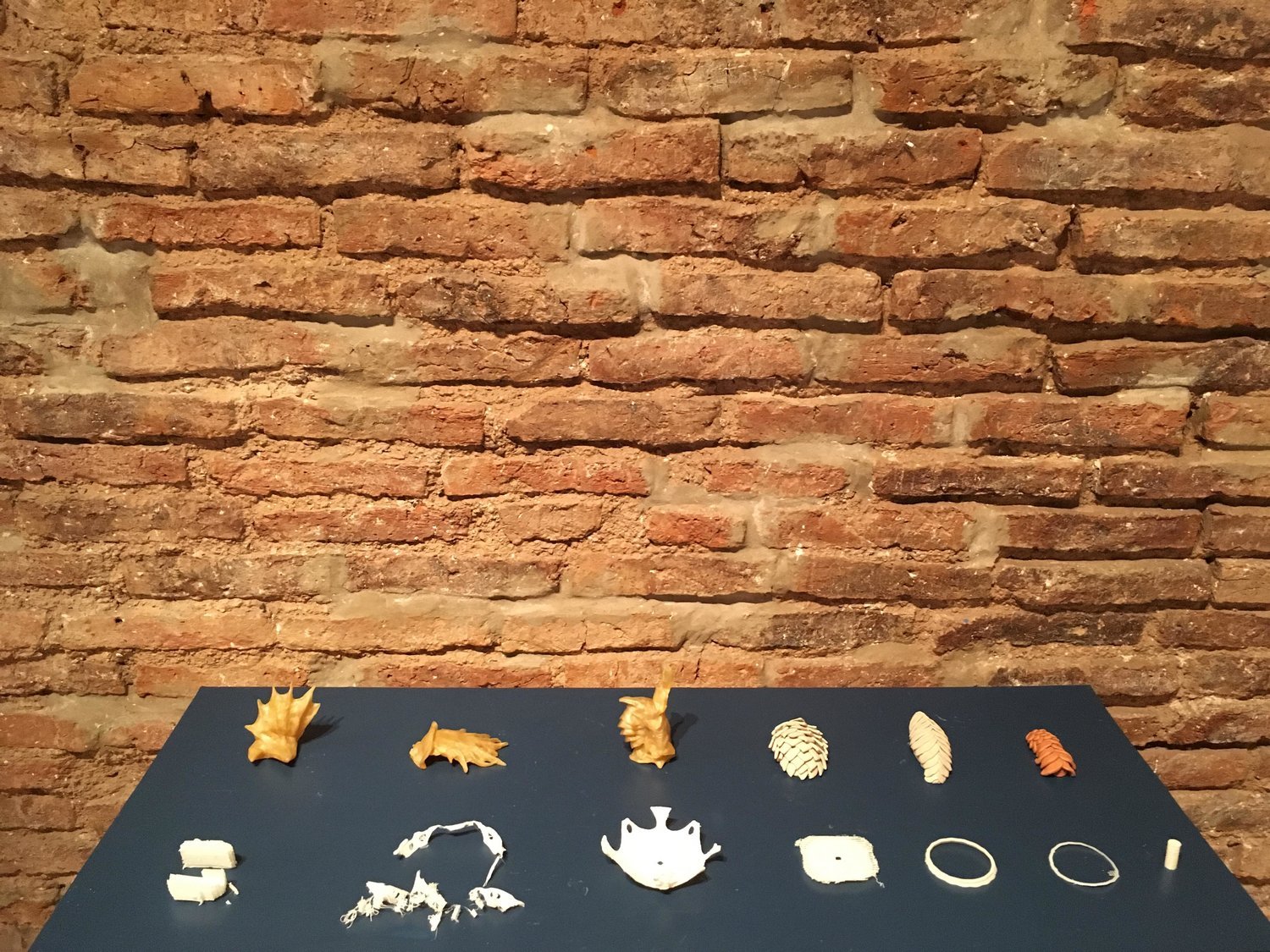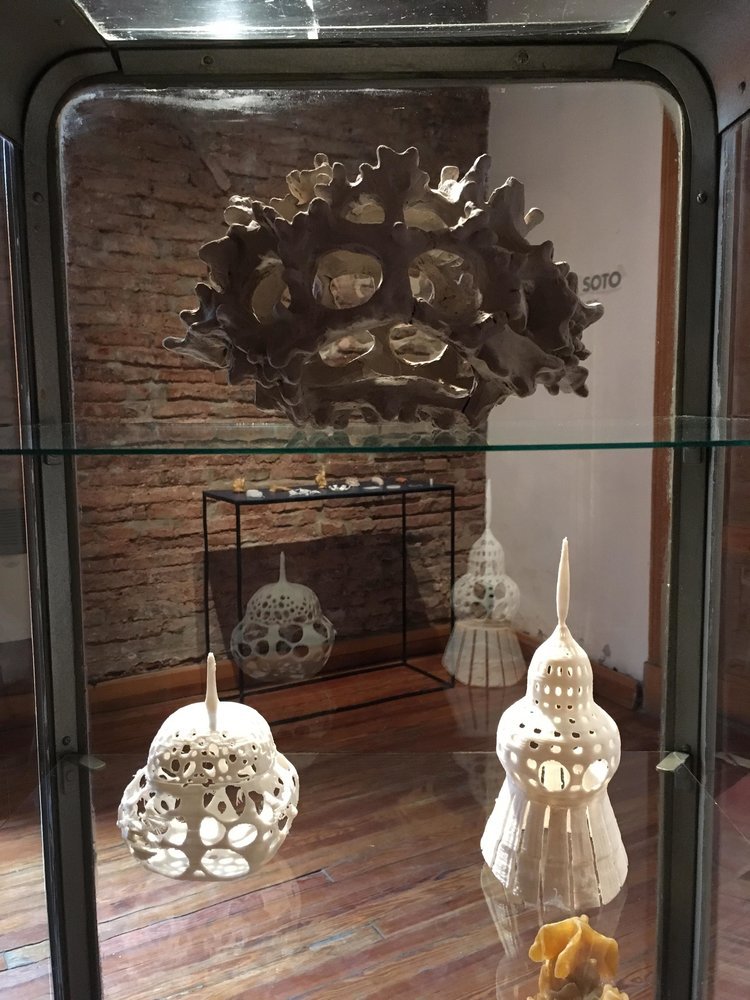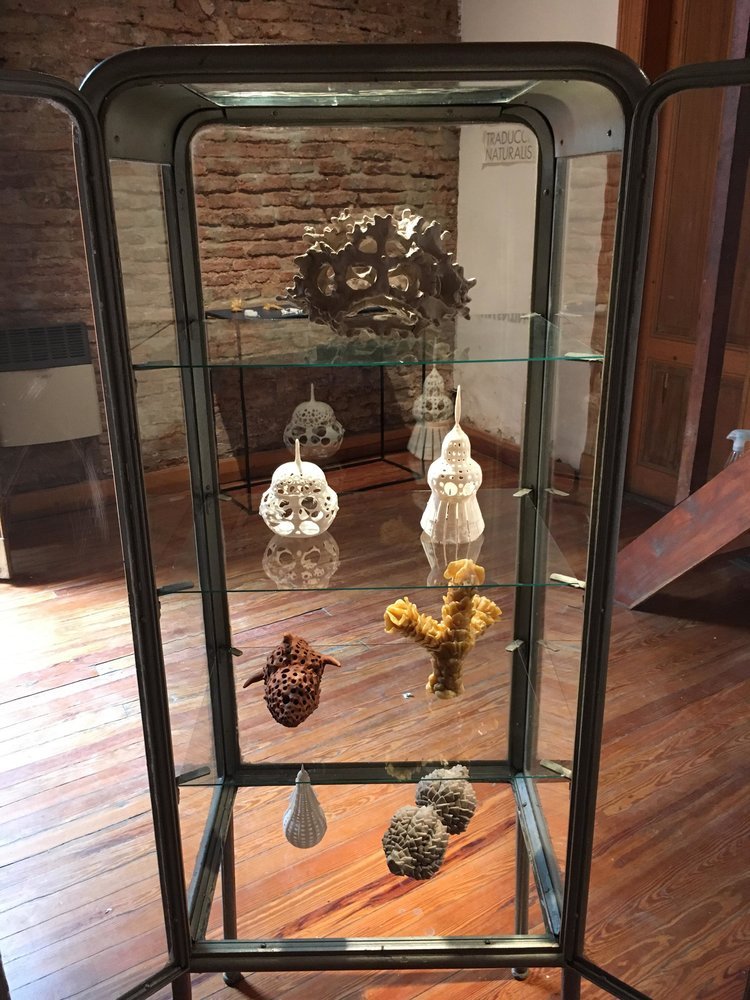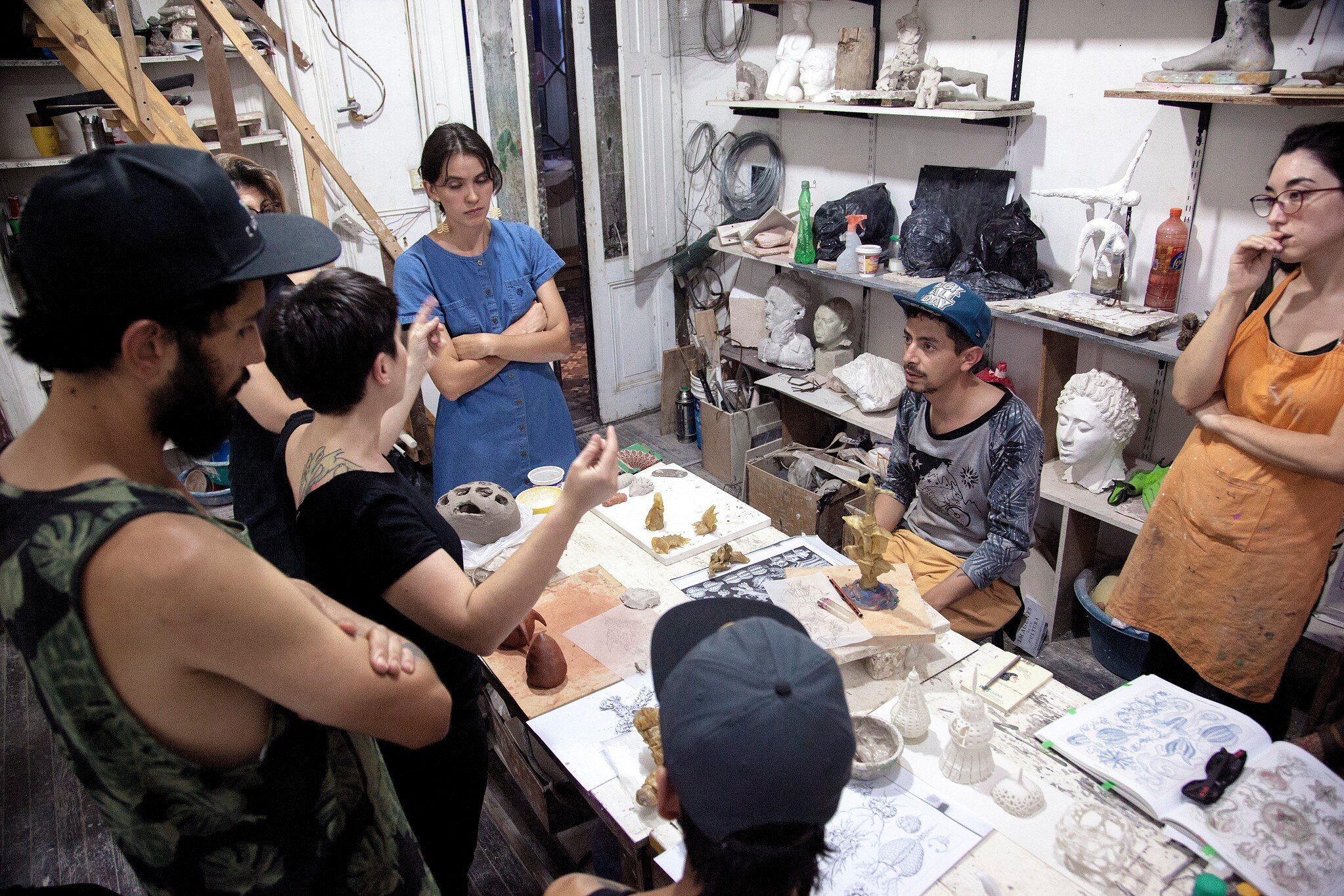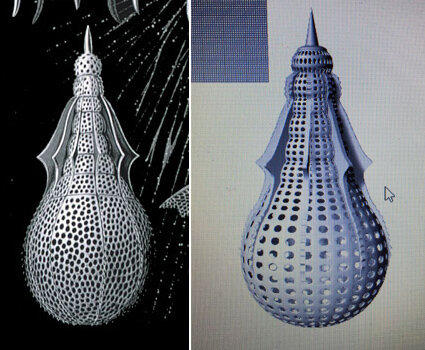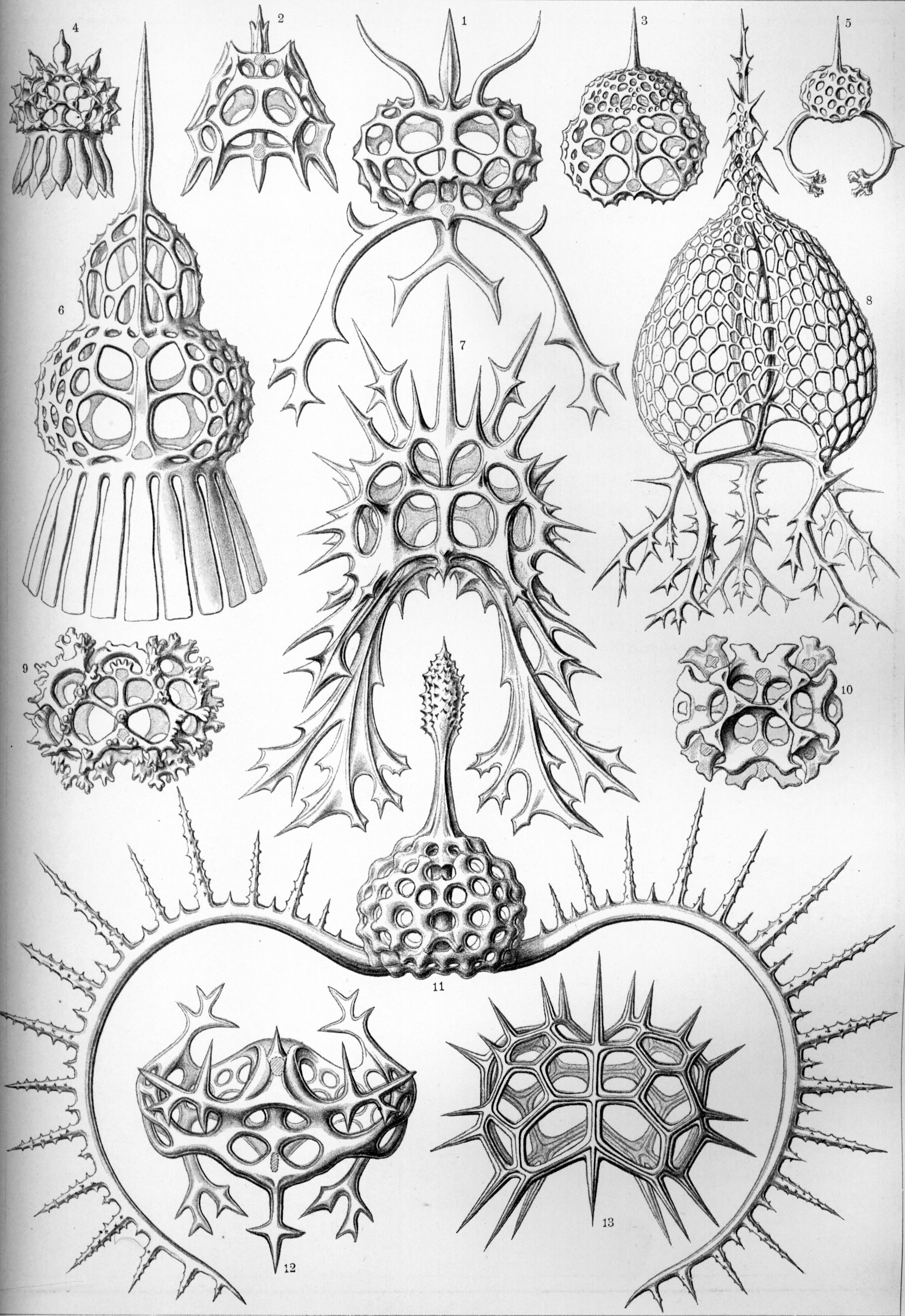Traducción naturalista
Gabinete, cera, PLA (impresión 3D) y arcilla cruda. 160 x 40 x 55 cms. Marzo 2018
Las formas provienen de grabados de Ernst Haeckel (naturalista alemán del s. XX), del libro Kunstformen der Natur (Obras de arte de la Naturaleza), de 1904.
La mitad de ellas fue realizada en impresión 3D (traducción digital) y el resto en arcilla en crudo y cera de modelar (traducción manual). El modo de exhibición también remite al lenguaje de las ciencias naturales. ¿Qué se gana y se pierde con cada modo de representación?
—————————————————————————————————————————————
Natural Translations
Cabinet, wax, unfired clay, PLA (3D printing). 62 x 16 x 22 inches. March 2018
The different objects displayed in the cabinet correspond to different representations of illustrations from the German naturalist Ernst Haeckel (XIX century), taken from the book “Art Forms in Nature”. Half of these illustrations are done in a 3D printer and the other half by hand (unfired clay and wax). I pretend to compare the different procedures of representation: the manual vs. the digital. How both procedures give different information of a figure, and how the apparent “perfect” copy of the digital also implies its glitches. A tri-dimensional object (nature), becomes two-dimensional (illustration), to become tri-dimensional again (object). How much is gained/transformed in each representation exercise?
